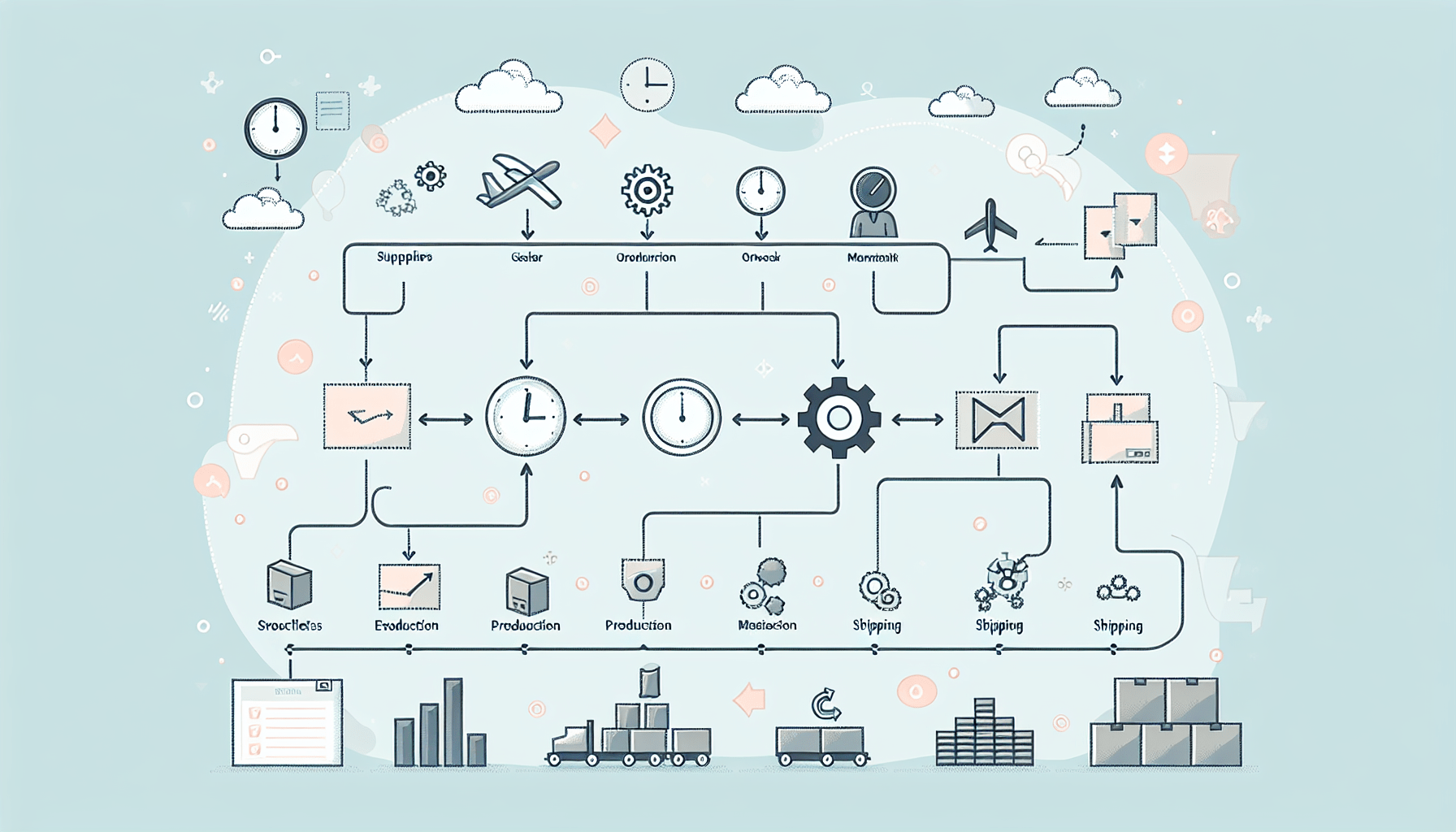Implementing lean manufacturing can feel daunting, especially if you’re unsure where to begin. It’s common to wonder how to streamline processes and reduce waste without sacrificing quality or team morale. You’re not alone! Many businesses face these challenges as they strive for efficiency.
But don’t worry! If you stick with me, I’ll guide you through the steps needed to successfully implement lean manufacturing in your operations. By the end, you’ll have a clear roadmap and practical tools to transform your workplace into a lean machine, maximizing value and minimizing waste.
We’ll start with understanding your motivations and then move through the essential steps, from building leadership support to celebrating your successes. Get ready to embrace a more efficient and high-performing environment!
Key Takeaways
Stefan’s Audio Takeaway
- Identify your goals for lean manufacturing to guide your implementation.
- Engage leaders and change agents early for strong support.
- Educate your team on lean principles to foster understanding and buy-in.
- Create a value stream map to spot inefficiencies in workflows.
- Apply lean tools like 5S and Kanban to streamline processes efficiently.
- Monitor progress using performance metrics to assess effectiveness.
- Continuously look for ways to eliminate waste and improve processes.
- Encourage a culture of continuous improvement through regular feedback.
- Manage change effectively and resolve conflicts with open communication.
- Celebrate successes and learn from setbacks to foster a positive environment.

Step 1: Determine Why You Want to Implement Lean Manufacturing
Before diving headfirst into lean manufacturing, take a moment to consider why you want to implement it. Are you aiming to reduce waste, improve efficiency, or boost overall productivity? Pinpointing your goals will help you tailor your approach and gain team buy-in.
Think about the pain points in your current processes. If the average factory generates 1TB of production data every day, chances are there’s a lot of room for improvement. Jot these issues down; it’ll make for a nice checklist later on.
Establish clear objectives that can be measured, like reducing lead times or cutting costs. These will not only guide your implementation but also help you track progress down the line.
Step 2: Build Leadership Support and Identify Change Agents
This step is all about rallying the troops—starting with leadership. Engaging key leaders early ensures that there’s a strong commitment to lean initiatives. Their support will be invaluable when it comes to resource allocation and driving cultural changes.
Identify change agents, or those enthusiastic team members who can lead by example. These individuals should be passionate about the lean method and willing to champion it among their peers.
Having a mix of leadership support and grassroots advocates makes for a robust approach. Ask your leaders to hold informational meetings to discuss the benefits of lean manufacturing and how everyone will benefit from it.
Step 3: Educate Your Team on Lean Principles
Let’s face it: if your team doesn’t understand lean principles, your implementation efforts may fall flat. Start with training sessions on the basics—what lean is, why it matters, and how it can change their daily work life for the better.
Consider using real-world examples to illustrate how companies have benefited from lean practices. For instance, companies leveraging real-time data analytics, like Carolina Precision Manufacturing, have significantly reduced downtime and cut material waste.
Encourage questions and discussions during these sessions. The more involved your team feels, the more likely they are to embrace the new principles. Also, think about providing resources for continuous learning; having a backup stash of helpful articles or videos can really go a long way.

Step 4: Create a Value Stream Map
Creating a value stream map is a game-changer for identifying inefficiencies in your processes.
This visual tool helps you see the flow of materials and information, from the time an order is placed until it’s delivered.
Start by mapping out all the steps in your process, from suppliers to production to shipping.
Identify non-value-added activities such as excessive waiting times, redundant processes, and unnecessary movements.
For example, Carolina Precision Manufacturing used value stream mapping to pinpoint bottlenecks, resulting in a smoother workflow.
This mapping process not only highlights what’s working but also what isn’t, guiding you toward actionable improvements.
Make it a team effort—this collective insight can often lead to discoveries that an individual might miss.
Step 5: Apply Lean Tools and Techniques
Now it’s time to get your hands dirty and start applying lean tools and techniques.
Tools like 5S (Sort, Set in order, Shine, Standardize, Sustain) can help organize your workspace, making it easy to find what you need and maintaining cleanliness.
Kanban systems are fantastic for visualizing workflows and managing inventory.
Consider adopting techniques such as Just-In-Time (JIT) manufacturing, which allows you to reduce inventory costs by ordering supplies only as needed.
Real-time data analytics can enhance these tools, as seen with NOV CAP, who boosted their CNC machine usage by 20% in just three months through data evaluation.
Don’t hesitate to involve your team in brainstorming sessions to identify which tools will be most effective for your unique challenges.
Step 6: Monitor Progress with Performance Metrics
Measuring your progress is essential to see how lean initiatives are performing and where adjustments might be needed.
Focus on key performance indicators (KPIs) like Overall Equipment Effectiveness (OEE), defect rates, and lead times to gauge success.
A monitoring system allows you to quickly identify any emerging issues and address them proactively.
For instance, implementing a dashboard that showcases real-time performance metrics can keep everyone on the same page.
As a benchmark, many manufacturing facilities rely on data analytics, with about 81% using it to boost productivity.
Regular reviews will also help you celebrate small wins, which is crucial for maintaining morale.
Step 7: Streamline Processes and Eliminate Waste
Next up is looking for ways to streamline your processes and get rid of waste.
Common areas of waste include overproduction, waiting times, and excess inventory that can bog down production.
Start by analyzing your value stream map to see where these inefficiencies are lurking.
Real-time data analytics can help you identify frequent roadblocks that hinder productivity.
For instance, if you notice long turnaround times for particular processes, dig deeper to find the root cause and address it.
This focus on constant improvement aligns perfectly with the lean philosophy of minimizing waste while maximizing value.
Step 8: Commit to Continuous Improvement
Lean manufacturing is not a one-time effort; it’s all about committing to continuous improvement.
Encourage a culture where feedback is welcomed and teams are empowered to suggest changes.
Hold regular review meetings to reflect on what’s working and what isn’t, making adjustments along the way.
Real-time analytics can be your best friend here, revealing insights that might not be visible otherwise.
Iterate on processes as you gain more data; it’s about creating a cycle of feedback that drives ongoing improvements.
Remember, even the smallest improvements add up over time, so don’t overlook the little things.
Step 9: Manage Change and Resolve Conflicts
Change can be a tricky business, so focusing on how to manage it is super important.
Prepare your team for the changes ahead, addressing potential roadblocks before they escalate.
Communication is key—keep everyone informed about what’s changing and why it matters.
Be open to feedback and be ready to adjust your approach if something isn’t working.
Conflict may arise, especially if team members feel threatened by new processes.
Encourage open dialogue and create safe spaces for discussions, helping to foster understanding and collaboration.
Step 10: Celebrate Success and Learn from Setbacks
Finally, celebrate your wins, no matter how small.
Recognition boosts morale and encourages team members to stay engaged and committed.
When an initiative leads to improved efficiency or cost savings, share those wins with the whole team.
But don’t shy away from setbacks—they’re opportunities to learn.
Reflecting on what went wrong will provide valuable insights that can inform future decisions.
Create a positive atmosphere where the focus is on learning and growing, not pointing fingers.
FAQs
Implementing Lean Manufacturing can lead to increased efficiency, reduced costs, improved quality, and enhanced customer satisfaction. It minimizes waste and promotes a culture of continuous improvement in the organization.
Engage leaders early by demonstrating the potential benefits of Lean Manufacturing. Provide training, share success stories, and involve them in the planning process to secure their commitment and advocacy.
Key metrics to monitor include cycle time, lead time, inventory levels, defect rates, and overall equipment effectiveness. Tracking these will help assess progress and identify areas for improvement.
Lean Manufacturing fosters a culture of continuous improvement by encouraging employees to identify inefficiencies, suggest changes, and take ownership of processes, leading to ongoing enhancements and sustained success.
